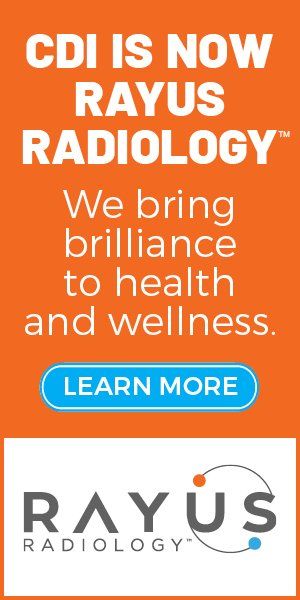here is a lot broken in our health insurance system. Health care costs in the U.S. are far higher than the rest of the world. Most people agree this is a problem. Health care went from 5 percent of the gross domestic product (GDP) in 1960 to 19.7 percent in 2020. These costs put a strain on the financial security of individuals and businesses, as well as being the primary driver of our federal budget deficits. Our country is less competitive in producing and marketing goods and services in the global marketplace because of the excessive cost of health care.
cover story one
Mending a Racket
Empower-Patient Accounts
By Robert Koshnick, MD, FAAFP
Health care costs could be reduced if we cut out the middle men and gave people the means to pay directly for their primary care. There would be less documentation, coding and regulatory burdens from third-party payers because they would not be involved in the payment for primary care services. Primary medical care would return to being between patients and their physicians. This would lessen the cost.
Most of physicians’ time is now spent on documentation and administrative work, instead of patient care, to get paid by third-party payers. More than half of physicians are experiencing at least one sign of burnout. This has led to fewer physicians working full-time, more early retirements and some leaving medical practice for less onerous vocations. This increases the cost of medical care, makes physicians less productive and demands to be addressed.
A Bold New Solution
My proposal to reduce health care costs and inflation is to give people what I call Empower-Patient Accounts, or E-PA for short. An E-PA would give people means to pay directly for their primary medical care either on a fee-for-service basis or by using Direct Primary Care (DPC) services. DPC occurs when people pay a monthly fee directly to their primary care provider. Their primary care provider would then provide immunizations, basic mental health care, evidence-based preventive services, acute and chronic care management, prenatal care, child medical care and oversee hospice care with no other copays or expenses. DPC providers often provide laboratory tests, prescription medicine, radiology services and procedures at wholesale or reduced prices which further lowers the cost of health care.
E-PA would need to be defined by state and federal legislation, similar the process that created the health saving account (HSA). Today thirty-two million Americans have an HSA. Many people have difficulty affording their deductibles. This leaves them financially vulnerable. E-PA could provide them with some funds to pay not only for primary care but other expenses. E-PA would be compatible with having an HSA without having their coverage mandates.
Something must be done to counteract the price rigging and destruction of our health care system.
E-PA funding would depend on people’s financial circumstances. Medicaid-eligible recipients could have E-PA directly funded like Personal Wellness and Responsibility (POWER) Accounts in what is called the Health Indiana Plan. The POWER accounts were established through a Section 1115 Medicaid Demonstration Waiver and became operational in January of 2008. Power Accounts were funded at the level of $2,500 a year for Medicaid recipients. I suggest that E-PA be funded at $3,000 per individual or more.
Individuals in the middle-income level above Medicaid eligibility could receive monthly tax rebates from the government which they could put into the E-PA. These rebates would be adjusted based on their yearly income levels. The rebates would gradually be phased out until there would be no rebates at a certain income level. At a legislatively defined high income level there would be no rebates. E-PA rebates would not be taxable. Also, E-PA would be individually adjusted and not dependent on marital status. Otherwise, people could be punished by losing benefits when there is an increase in net income by two incomes.
People above a certain income would be able to make personal contributions to their E-PA up to the level that Medicaid patients receive for their E-PA. To encourage people to do this, the contributions would be tax deductible. There should be no specific mandates on the use of the E-PA. The money in the E-PA is meant to pay for primary care but could, at individual discretion, be used to pay directly for other medical expenses. The thrust of E-PA is to reestablish a medical marketplace as we have for all other goods and services.
Administrative Details
People would set up an E-PA with a financial institution that would be responsible for record keeping and distribution of the E-PA funds. These institutions would provide an EBT-like smart credit card for people to pay for qualified medical expenses. They could also provide investment opportunities for people who had built up their accounts to increase the returns on their money. Money in these accounts could build up tax-free and not be taxable on distribution if the money was spent on qualified medical expenses. E-PA could be passed on to heirs which could help build up generational wealth as well as medical care cost self-sufficiency.
E-PA would improve how we finance primary care. The same approach could be used to fund high deductible health plans (HDHP) for major medical expenses.. The key is to have no other requirement on the HDHP than to help people manage paying for major medical expenses. Private companies would compete to provide HDHP at competitive costs. Then people could oversee paying for their own health care. The most desirable outcome would be that this combination (E-PA with HDHP or with HSA) could lead to a medical market with a unified U.S. health care payment system. Something must be done to counteract the price rigging and destruction of our health care system.
Any viable health care coverage plan must provide for the most vulnerable, those who have catastrophic illnesses or are disabled. Both E-PA and HDHP would help people with catastrophic medical issues or disability related medical care. There is a role for free clinics, federally qualified health centers and rural health clinics, nonprofits, state high deductible health plans and community fund raisers to address the problems of those who fall between the cracks. People would have much smaller financial deficits to address if they had both E-PA and HDHP.
Reducing Health Care Inflation
Medical care inflation in the United States is persistent. An important reason is that in the United States, patients pay only 9.4 percent of the $4.1 trillion in health care spending (2020 figures). People are disconnected from the cost of medical care because of health insurance. This sense of “free care” drives up demand for medical care which is labor intensive with limited human resources. This is the root cause for continued health care inflation.
The way to reduce health care inflation is to put people back in charge of paying for their medical care. People could pay for their own medical care if they had the combination of an E-PA and an HDHP or an HSA. Individual and national health care costs would then plummet. Medical care delivery would be much more efficient with higher patient and provider satisfaction. Quality would improve because a medical market would have been reestablished.
I opened a medical practice in the small town of Perham in 1976 and charged $6.50 a patient for all my office visits, which would be about $33 in 2021. I enjoyed my medical practice because I could easily see 25 or 30 (62 was my record) patients in a day. I could write or dictate a note “by exception,” which means documenting only what was abnormal. Fast forward to when I retired in 2018. I found it difficult to see fifteen patients a day because I had to document everything I was doing. Otherwise, third-party payers could claim I was committing fraud. Work that was not documented was not done from their point of view. The heavy involvement of third-party payer documentation requirements and government regulation have added enormous cost to medical care. It has also been a primary driver of medical care provider burnout.
Now it takes an army of people for a physician to practice medicine.
In Perham I started with two employees: my nurse and my receptionist. My overhead was minimal. Now it takes an army of people for a physician to practice medicine. Between 1970 and 2020, medical care administrative positions have increased 4000 percent while physician positions have increased little during that period. Dr. Robert Kocher, in a 2013 Harvard Business Review article titled “The Downside of Medical Care Job Growth”, found that the number of non-provider employees per physician ratio was 16 and the cost per physician was $823,000. The third-party payer system, the corporate practice of medicine, government interference and regulations generate that cost.
Leveling the Field
Minnesota is an example of how providing medical care through third parties has increased medical care costs relative to the rest of the country. When I went into practice, most of my patients paid directly for my services. They and I were very cost conscious. Minnesota had an average per capita healthcare spending relative to other states up to the year 1990. Since then, Minnesota’s health care spending has consistently been 10 percent above the national average per capita. Third parties (Medicare, Medicaid, Insurance) cover most health care expenses for Minnesotans. The medical care environment is dominated by eight big health care systems statewide. The dominance of those big systems statewide reduces regional competition.
The average American pays almost 20% of their productivity (19.7% of the gross domestic product in 2020) on medical care. The average Minnesotan spends almost 22% (ten% above average) of their productivity on medical care. E-PA would put control of those costs back into the hands of patients who would be paying for those services. This could dramatically reduce those costs for primary care.
E-PA could allow everyone to have a primary care physician, a common good. Patients would then be able to pay for a direct patient-to-physician relationship and be in control of their primary care payments. This would help to reduce health inequities by giving everyone access to primary care. It would reduce financial disparities by providing individuals with the asset of E-PA. That might even encourage better health behaviors, the major determinant of people’s health outcomes.
If E-PA were the dominant way to pay primary care physicians they would be able to set up their own medical practices. Physicians cannot afford to do that now because of the enormous cost of meeting government regulatory requirements. In addition, private insurers punish small clinics with low reimbursement rates and Medicare underpays physicians in rural Medicare Physician Payment Schedule (PFS) localities. E-PA would level the medical care playing field.
Small independent primary (SIP) care clinics allow physicians to again have some personal autonomy and flexibility in how they want to practice medicine and live their lives. E-PA would give SIP’s improved financial footing. This could help reduce physician burnout as some studies have shown.
In Conclusion
The present system of paying for primary medical care through third-party payers adds enormous cost and administrative burdens to medical care. Third-party payers use defined benefit plans, where there is open-ended access to care that makes it seem like it is free. This drives medical care inflation by driving demand for medical care where there are limited medical care resources. Funding health care through E-PA, and for that matter HDHP or HSA, would be through defined contribution plans, where health care costs would be defined and controllable.
There would be enormous push back from those that benefit from the $4.1 (19.7%) trillion of the $20.89 trillion GDP of the United States equaling $12,530 per capita (2020 figures). The people that benefit from that enormous trough of money would argue that the money spent on medical care should be directed by them, the third-party payers, rather than patients themselves.
Journalist John Cassidy said, “By allowing millions of decision-makers to respond individually to freely determined prices, the market allocates resources—labor, capital, and human ingenuity—in a manner that can’t be mimicked by a central plan, however brilliant the central planner.” E-PA accounts, by empowering patients, could give the country 336 million decision-makers that could accomplish the efficient allocation of resources. Ideally, states could pilot the concept of empowering patients by moving federal subsidies (Medicaid, premium tax credits) to E-PA and HDHP or HSA.
People and politicians need to realize that paying directly for medical care would reduce its cost as it does for all other services and products in the United States. It is a big step, however; defined benefit plans give people an incentive to be conscious of medical care costs presents clear benefit to all.
The way to fix the cost of health insurance is to return insurance to its original function: cover major medical expenses. E-PA with an HDHP or an HSA as the dominant form of paying for medical care, would put patients in control of their medical care. It would dramatically reduce the cost of health care in the United States.
Robert Koshnick, MD, FAAFP,
is a retired primary care physician. He recently published “Empower-Patient Accounts Empower Patients,”available through the Alethos Press in St. Paul, Minnesota, or on Amazon. He is program director for the Minnesota Physician-Patient Alliance.
MORE STORIES IN THIS ISSUE
cover story one
Mending a Racket: Empower-Patient Accounts
By ROBERT KOSHNICK, MD, FAAFP
cover story two
Prior Authorization: The time is now for reform




















